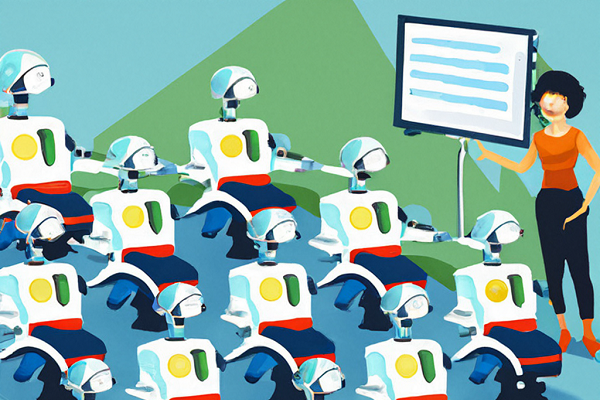OpenAI Creates ChatGPT Guide for Teachers, Admits AI Text Detectors Don’t Work
 OpenAI sees a place for ChatGPT in classrooms despite bans and strict limits on the generative AI chatbot appearing across the educational spectrum. As a solution, OpenAI has published a strategic outline for how educators can employ ChatGPT, bolstered by examples from actual teachers who have successfully incorporated the conversational generative AI chatbot into their curriculum, even without any assurance of a way to distinguish text written by AI from human compositions.
OpenAI sees a place for ChatGPT in classrooms despite bans and strict limits on the generative AI chatbot appearing across the educational spectrum. As a solution, OpenAI has published a strategic outline for how educators can employ ChatGPT, bolstered by examples from actual teachers who have successfully incorporated the conversational generative AI chatbot into their curriculum, even without any assurance of a way to distinguish text written by AI from human compositions.
Educational AI
OpenAI’s suggestions largely center around teachers working with students to develop critical thinking skills focused on AI-generated information. The goal is to promote skepticism over blindly trusting ChatGPT’s answers, according to Geetha Venugopal, a high school computer science teacher at the American International School in Chennai, cited in OpenAI’s blog post.
But, ChatGPT has plenty of positive uses for teachers, according to OpenAI. Examples include helping students learn English through correct and useful translations since the grammar and spelling are almost certainly correct even when the facts are awry. The chatbot could also serve as a kind of teacher’s assistant under the right circumstances. Old Dominion University professor Dr. Helen Crompton has her students use an appropriately prompted ChatGPT as a virtual debate partner or interviewer. ChatGPT could also be of use in preparing a curriculum by helping teachers brainstorm test questions or classroom activities.
“If you go to ChatGPT and ask it to create 5 question exams about electric circuits, the results are very fresh,” Universidade da Coruña professor Fran Bellas wrote for ChatGPT’s blog post. “You can take these ideas and make them your own.”
FAQ Accuracy
OpenAI also created an FAQ with further ideas on how to use ChatGPT in the classroom and answers to common concerns about the chatbot. One of the first questions is “Do AI detectors work?” And OpenAI doesn’t hold back in answering.
“In short, no. While some (including OpenAI) have released tools that purport to detect AI-generated content, none of these have proven to reliably distinguish between AI-generated and human-generated content,” OpenAI states in the answer. “Additionally, ChatGPT has no “knowledge” of what content could be AI-generated. It will sometimes make up responses to questions like “did you write this [essay]?” or “could this have been written by AI?” These responses are random and have no basis in fact.”
The admission is notable since OpenAI shut down its own tool for detecting AI-written text six months after its release with a brief, unpublicized note. OpenAI also offered tips for identifying plagiarism, admitting that small edits often fool detection systems. The company instead recommended having students show drafts and ChatGPT conversations to prove organic work. That said, Turnitin still claims nearly 100% accuracy in detecting AI writing, and GPTZero claims to accurately identify 99% of human-written articles and 85% of AI-generated ones.
Classrooms represent an important frontier for ChatGPT as it pursues mainstream adoption, and these kinds of guides may help ease hostility toward ChatGPT among educators, but it’s not likely to change quickly.
Follow @voicebotaiFollow @erichschwartz








